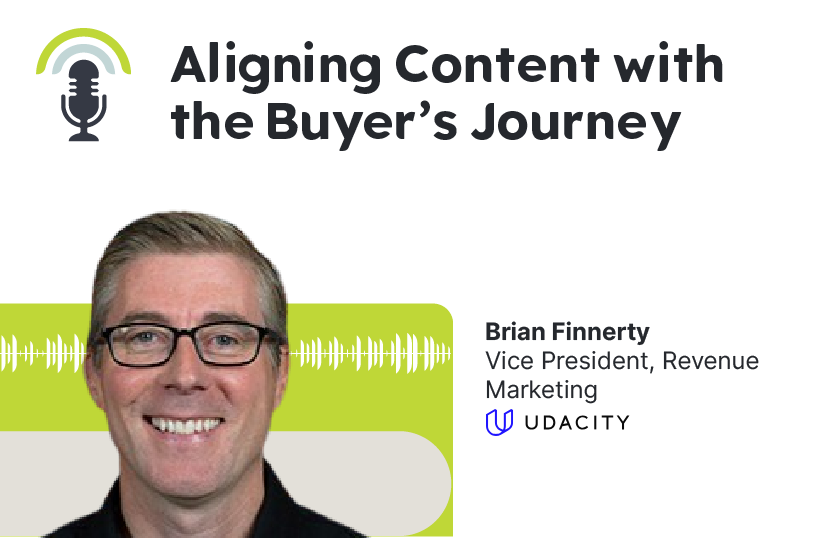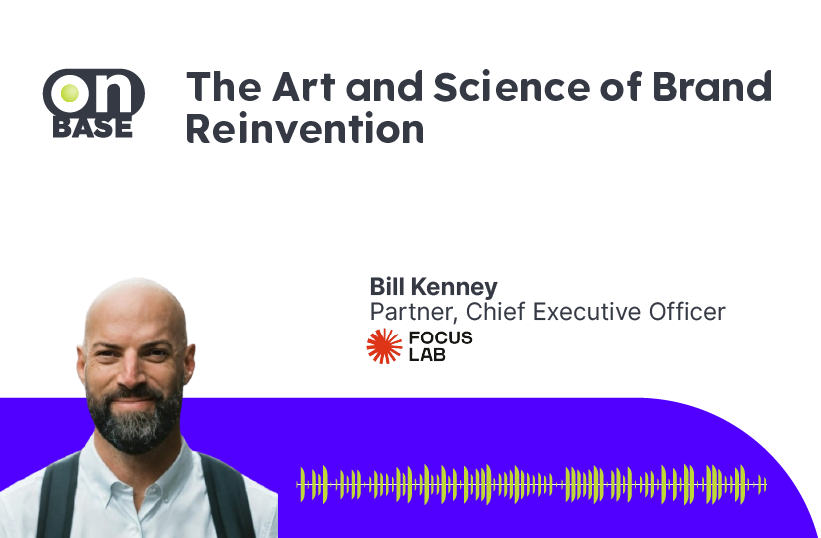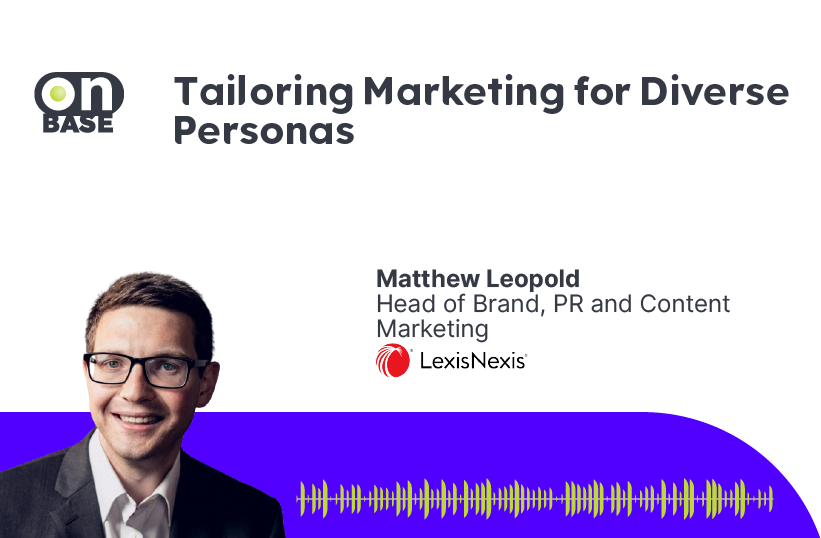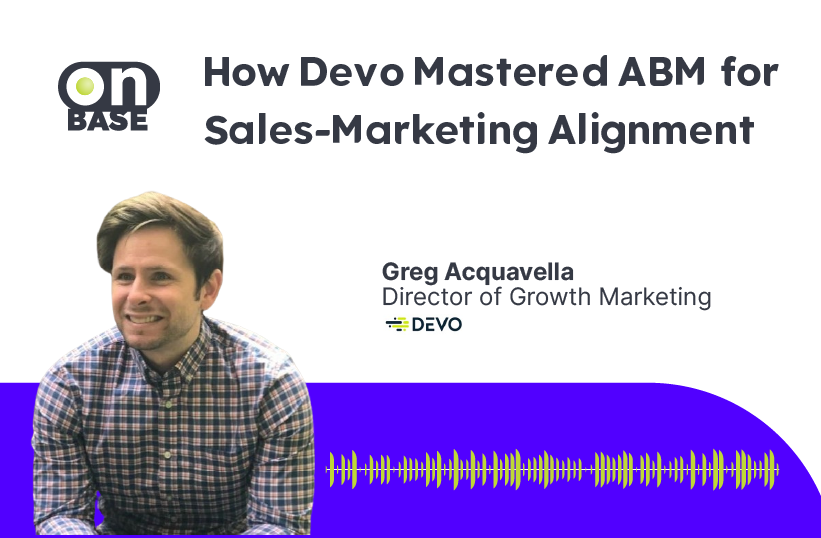Shownotes
Brian Finnerty of Udacity discusses effective strategies for aligning content to different stages of the buyer’s journey. He stresses the importance of investing in lower funnel proof points like customer success stories and third-party reports. Finnerty also provides tips for validating content assumptions directly with customers. Additionally, he emphasizes optimizing the content mix based on performance data and attribution to opportunities. Throughout the conversation, Finnerty reinforces the importance of tying content marketing efforts directly to pipeline and sales goals.
Best Moments
-
Brian shares his marketing background starting as a technical writer and transitioning into marketing leadership roles.
-
Brian discusses challenges of aligning content to different stages of the funnel and the importance of understanding customer needs.
-
Brian provides advice on how to determine content needs at each stage when an organization is first building out their strategy.
-
Brian emphasizes the importance of investing in lower funnel proof points like customer success stories
-
Brian reinforces that pipeline should be the primary metric for measuring content marketing success.
About the guest
Brian is a senior marketing executive with deep experience leading successful marketing teams. He believes that marketing can deliver extraordinary results when it harnesses the right blend of full-funnel demand, sales alignment, and rich customer insights. Brian’s expertise includes brand strategy, B2B demand generation, and global customer acquisition from mid-market to Fortune 500.
Key takeaways
- Map content assets to stages of the buyer’s journey, including top-of-funnel awareness content and bottom-of-funnel proof points
- Invest in lower-funnel customer success stories and third-party validation reports
- Validate content assumptions directly with customers through feedback
- Optimize the content mix regularly based on performance data and attribution to opportunities
- Track pipeline as the primary metric for measuring content marketing success
Quotes
“If you’re able to track all of those touchpoints, and make sure that they’re associated with opportunities in your CRM, then I think you’ve got a fairly consistent way of assessing how your content engine is performing.”
-Brian Finnerty
Highlights from this episode
How did you get started in marketing and demand generation?
Brian explains that he got started in marketing after graduating with an English degree. His first role was as a technical writer at Skillsoft, where he learned about written communication and structuring material for learners. When a startup was spun out of Skillsoft, Brian took on the marketing lead role since he had experience with writing and basic communication. This allowed him to “cut his teeth” in marketing and realize it was an enjoyable career path that utilized both creative and technical skills.
What are some of the challenges you’ve experienced trying to align content assets to various stages of the funnel?
Brian says one of the main challenges of aligning content to different funnel stages is that content needs to serve a clear purpose. He notes it’s important to think about which content assets fit in the awareness, consideration, and decision/purchase stages of the funnel. Some challenges he mentions include:
– Determining what type of content is most effective at the top-of-funnel awareness stage when prospects know little.
– Crafting mid-funnel content as prospects start narrowing options and want to learn about the main players.
– Providing lower funnel proof points like case studies and analyst reports to validate the solution for decision-makers.
What advice would you have for folks to continue to build on understanding what they need at various stages?
Brian advises organizations looking to improve their understanding of content needs at different stages of the buyer’s journey to take a customer-centric approach. He recommends mapping out the stages and determining what types of content would be most useful for target personas at each point. It’s important to put oneself in the prospect’s shoes to see things from their perspective – what information they have, what challenges they face, and what success looks like to them. Directly engaging customers through interviews or surveys can provide valuable validation of content assumptions. Speaking to customers about their actual purchase experience, including what helped early on and which later stage materials like reports were useful, will help refine an organization’s content strategy to better meet prospect needs.
What channels do you think are best for activating stage-aligned content?
For top-of-funnel awareness content, Brian believes digital display advertising can be highly effective at building broad reach and visibility. As prospects begin considering options, he cites LinkedIn as a valuable channel for mid-funnel assets since it allows targeting dynamic audience segments and retargeting engaged prospects. Throughout the funnel, email remains a powerful tool when sent to appropriately segmented lists. Additionally, Brian stresses optimizing the website experience by ensuring prospects can easily access desired information via resources, chatbots, and contact forms. He notes the website is central to driving prospects toward a purchase decision. Cross-channel attribution is also important according to Brian, to gain insight into how different touchpoints influence opportunities and pipeline.
What metrics do you use to determine the success of stage-aligned content strategy?
Brian emphasizes that pipeline generation should be the primary metric for measuring the success of a stage-aligned content strategy. While acknowledging there are ancillary benefits like brand awareness, he feels content must substantially contribute to the pipeline to justify the investment. Brian tracks pipeline influence from content using marketing attribution models to understand how engagement correlates with opportunities. He also looks at engagement metrics to evaluate content performance but sees these as less important than pipeline attribution. In summary, Brian focuses on the pipeline as the ultimate yardstick to determine if content is effectively moving prospects down the funnel and achieving the desired business outcomes.
Resource recommendations
Books
Brian suggests “No Rules Rules” by Reed Hastings and Erin Meyer about Netflix’s approach to talent and culture.
Podcasts
Professor Galloway’s podcast, ‘The Prof G Pod’ for marketing and sales insights.
Shout-outs
–Dave Gerhardt, Founder and CEO, of Exit Five.
–Shane Murphy-Reuter, CMO of Webflow.
–Michael OConnell, Marketing Leader at Tines.
–Tulin Green, Sr. Director EMEA Marketing at Confluent.
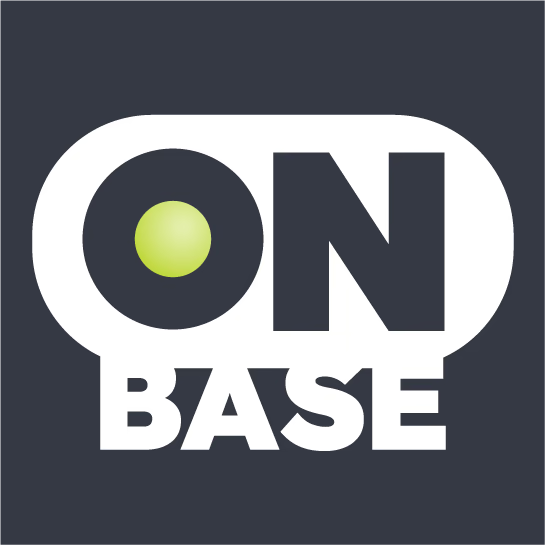
OnBase
Bridging the Divide, Between Sales and Marketing
